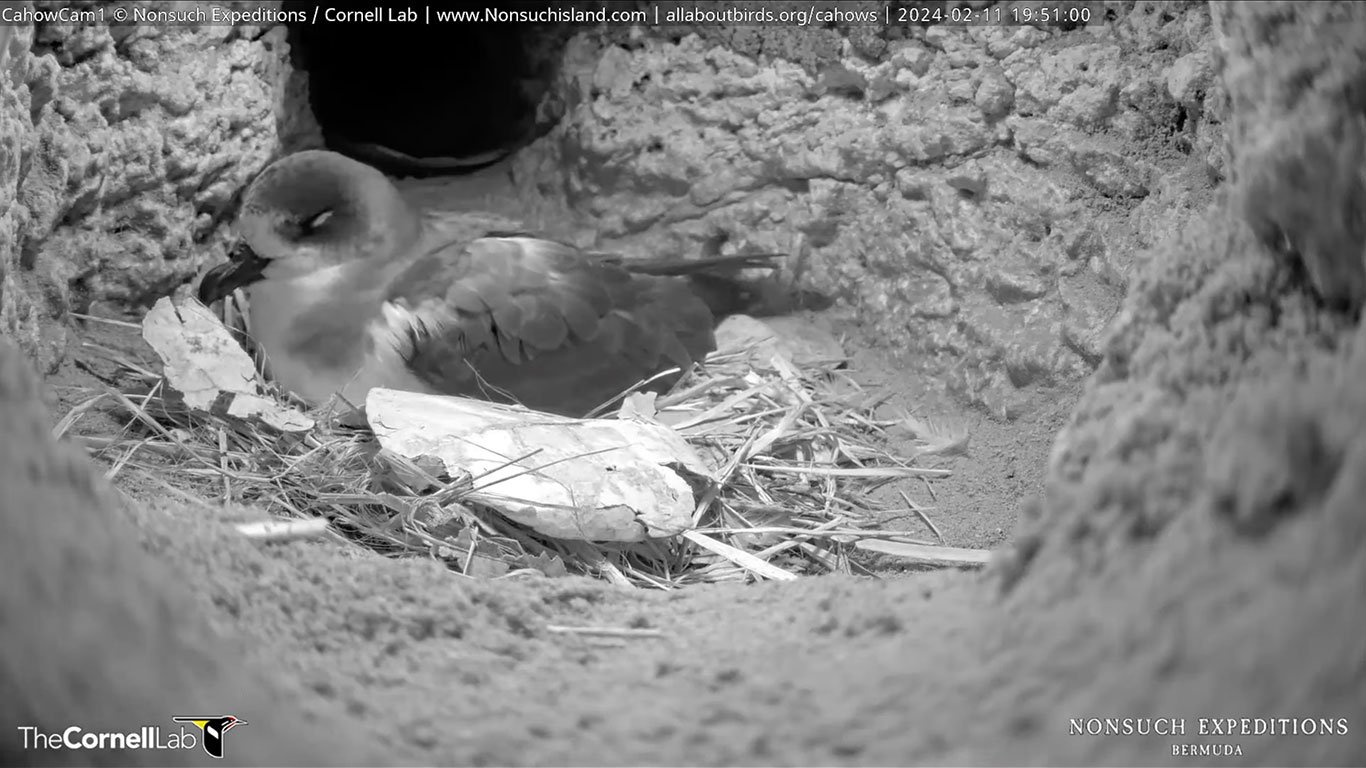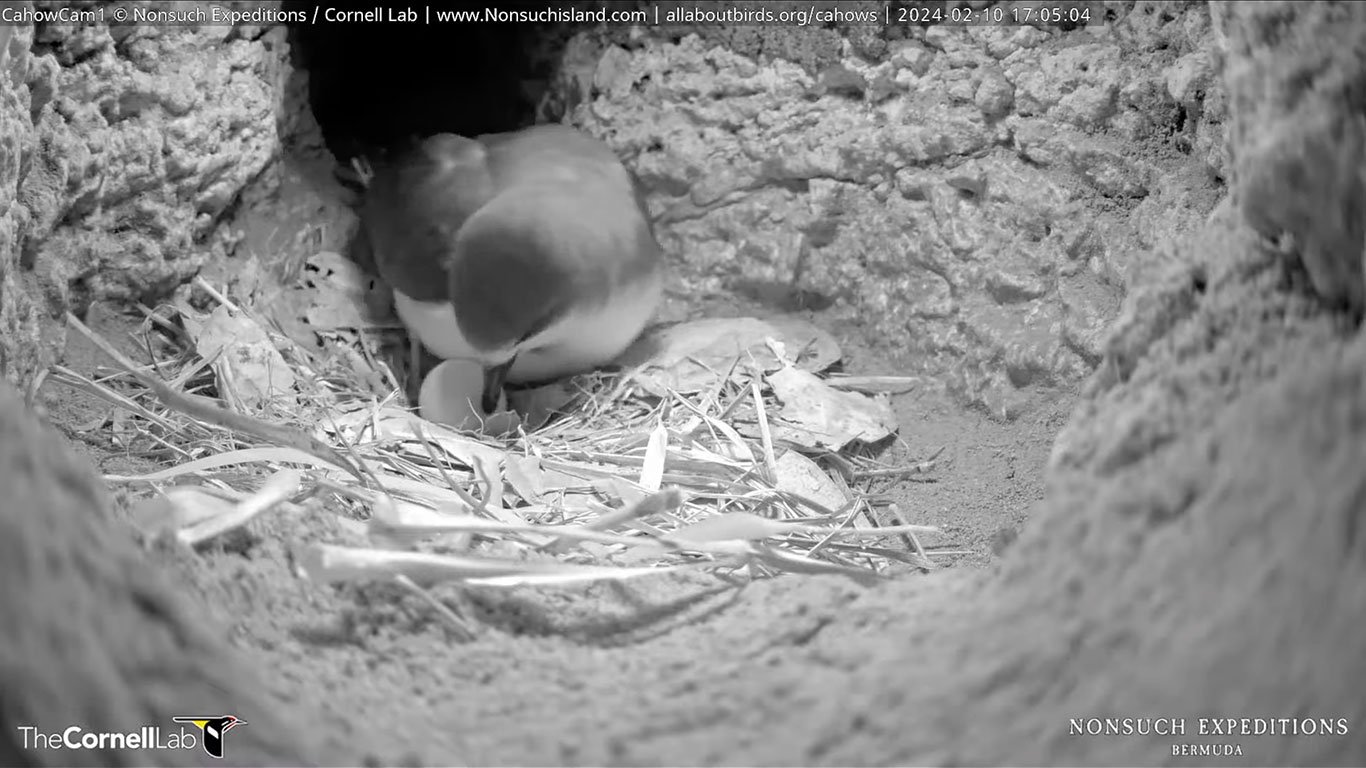As of Saturday, 10th February, 2024, most Cahows have already been incubating their single eggs for a month or more, indicating that we are more than halfway through the normal egg incubation period of 53 - 55 days. The first eggs to be laid should be hatching in only about 12 to 15 days, while eggs that were laid later, such as in the CahowCam 2 nest, which was laid at the record late date of 26th - 27th January, if it hatches will not do so until the end of March.
During a check that I was able to carry out on the 10th of Feb, I was able to confirm that the egg in the CahowCam 1 (R831) nest was fertile and looked like it was developing normally and was at 53.5 grams weight. This egg was being incubated by the female bird (band no. E0212), who had evidently just taken over incubation duties from her mate, being at a very high weight (for a female bird) of 397 grams. If all continues to go well, this egg should hatch sometime around the very beginning of March.
In the CahowCam 2 (R832) nest burrow, both adult birds were present, with the new female bird (band no. E0621) incubating the egg. She looks like she is about ready to relinquish incubation duties to her mate and return to sea to feed, as she was measured at only 289 grams in weight, while the older male bird (band no. E0174) is ready to take over at 377 grams in weight. The most exciting news about this nest, where the male lost his long-time mate of 14 years, and now has a new mate, is that I was able to confirm that their first egg together was fertile, with a developing embryo observed when the egg was candled. This was a surprise, as the first egg produced by a first-time breeding female Cahow is often infertile. This egg was measured at 52 grams in weight and as mentioned will probably not hatch until near the end of March, if all goes well.
Although a couple of additional eggs were confirmed to have failed since the last checks, as of now the total number of fertile eggs still being incubated on Nonsuch Island stands at a minimum of 25-26 (the record number of fledged chicks from Nonsuch was 19 in 2023).
On the largest breeding colony on Horn Rock, at least 27-29 eggs were confirmed to still be fertile, stormy weather recently has made it difficult to determine total numbers at the other nesting islets, and stormy weather forecast for much of next week promises to continue to make landings at these small, rocky and exposed islets a hazardous occupation!
Jeremy Madeiros, Senior Terrestrial Conservation Officer, Dept. of Environment and Natural Resources, BERMUDA




